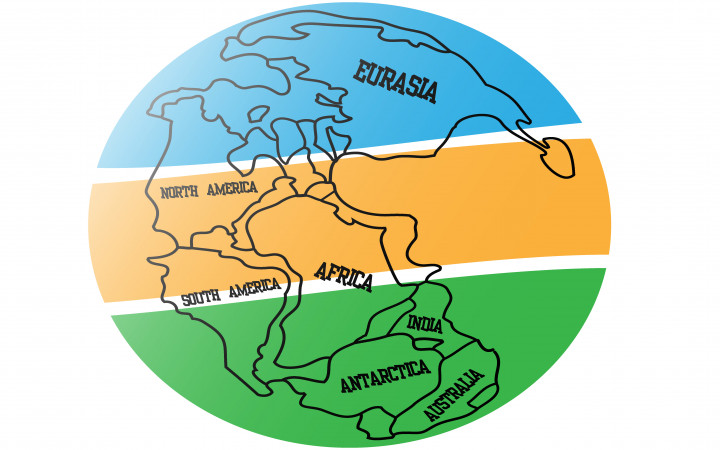Today’s Wonder of the Day was inspired by Olivia . Olivia Wonders, “Was Pangea really a thing?” Thanks for WONDERing with us, Olivia !
What continent do you live on? North America? South America? Africa? Asia? Australia? Europe? Would you believe that those continents used to be one huge body of land?
That’s what scientists believe. About 270 million years ago, almost all of the land on Earth was part of one supercontinent. Today, scientists call that land mass Pangaea. The name comes from a Greek word that means “all the Earth.”
Pangaea covered about one-third of Earth’s surface. What took up the other two-thirds of the planet? A giant ocean! Without many landmasses to break up the water, the world’s oceans formed one worldwide body. This ocean was called Panthalassa.
Where did the idea of Pangaea come from? Do we have pictures or records from 270 million years ago? Of course not! Instead, a German meteorologist named Alfred Wegener developed the idea of Pangaea. He introduced Pangaea back in 1912 as part of his theories about how continents drift. Since then, scientists have learned a lot more about plate tectonics.
Experts think Pangaea started splitting apart around 200 million years ago. It broke apart slowly rather than all at once. Over time, the separate pieces drifted apart. Eventually, they created the continents we know today. This also created new oceans.
Is Pangaea the only supercontinent in Earth’s past? Many experts think not. They believe that another supercontinent existed a billion years ago. This mass was called Rodinia. Another one named Pannotia formed about 600 million years ago. It seems that the Earth’s landmasses have been drifting about for quite a while!
Plate tectonic theories tell scientists that the Earth’s crust is made up of various plates. These plates continue to move even today. Will you wake up tomorrow to your continent slamming into another one? No, of course not! The plates move very slowly, and it will be a long time before the continents move together again.
How do scientists know all this? They make educated guesses about the past based on evidence they find today. For example, scientists have found fossils from identical species on continents that are now far apart. This is just one piece of evidence that makes them believe the continents were once connected.
Experts also look to geological evidence. For example, scientists have found matching geological trends in South America and Africa. This makes them believe the two were once joined.
What do you think it would be like to live on a supercontinent? What might we name the next giant landmass? Luckily, we have plenty of time to decide. Experts think a new Pangaea could form within the next 50 million years!
Standards: C3.D2.Geo.2, CCRA.L.3, CCRA.L.6, CCRA.R.1, CCRA.R.2, CCRA.R.4, CCRA.R.10, CCRA.SL.1, CCRA.W.2




